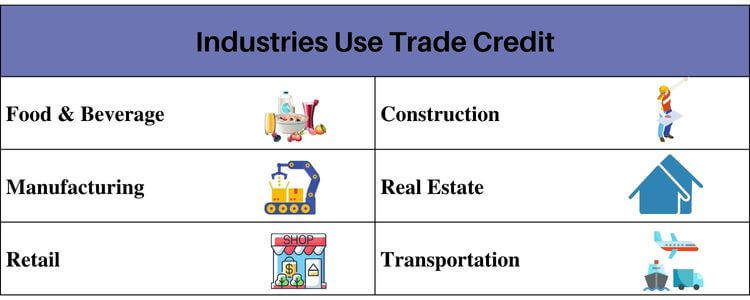01 Sep

When it comes to buying and selling a product, we often don’t want to shell out money upfront. Instead, what we need is trade credit. Trade credit is a form of unsecured credit given to another party when a business agrees to pay for certain goods or services that have not yet been received. Trade credit may sound like an easy win, but there are also several potential downsides to this form of financing as well.
This article explains what you need to know about trade credit, credit analysis, and its pros and cons.
Table of Contents
What is Trade Credit?
Trade credit is a type of financing arrangement where a buyer agrees to pay for goods or services in a future date. It is a business-to-business (B2B) arrangement that enables a company to acquire, produce, and market items without ever having to pay for them. This form of financing aids in lowering and controlling a company’s capital needs. The best feature of trade credit is the lack of interest charges even when you delay the repayment time. A seller provides trade credit to a buyer if he believes that the buyer will eventually pay for the goods or services.
Example
One of the best examples of trade credit is 2/10 net 30. It is a reliable way to buy items without worrying about monthly payment of bills or interest charges. 2/10 net 30 means payment terms are due 30 days after the invoice date. Customers will receive a 2% discount if they pay within 10 days.
Let’s say you sell $100 worth of merchandise to a company on 2/10 net 30 credit. The buying company agrees to pay you $50 cash now and the remaining balance of $50 in 30 days. The buying company gives you a check for $50 today and promises to give you a check for the remaining amount in 30 days. In this case, the selling company has extended credit to you. If the company pays the amount within 10 days, they will get a 2% discount. Therefore, the buying company will pay $49 if they pay within 10 days.
Credit Period
Businesses that use trade credits typically give customers 7, 30, 60, or 90 days to make payment, with the transaction documented by an invoice. The provider may offer a discount if a consumer pays within a particular number of days before the due date. 2% off, for instance, if the payment is made within 10 days of the 30-day credit being issued. The term “discount” for this amount would be “2%/10 net 30” or “only 2/10 net 30.”
Reasons for Trade Credit
Several factors may lead a seller to extend trade credit, including the ones listed below:
- Customers could be struggling in a downturn in the market; therefore, the seller provides extended trade credit to help them survive.
- A seller may provide an extremely extended payment period in order to attract customers who value such conditions.
- To keep a steady stream of clients and gain their trust may result in a long-term increase in customer loyalty and retention.
- A sector might have a standard practice of giving customers a set amount of time to pay, such as 30 days starting from the date of shipment.
Credit Analysis
In order to decide which customers only need to be contacted, a company conducts credit analysis. This process aims to determine how the company will distinguish between customers who will pay and those who will not. The company uses many sources to identify the customer’s creditworthiness, such as financial statements, 5 C’s of credit,
Financial statements: The financial statements help the company to understand how well the customer’s company is doing financially. This helps them to identify potential while making financing decisions.
Credit Reports: The credit report is the key that unlocks a person’s financial history and is vital in credit analysis. They can be a part of your business strategy and offer valuable information that allows you to do better business with your customers.
Customer’s Payment history: A customer’s payment history is an essential factor in trade credit analysis, which could affect your credit rating and approval. If a customer has been paid on time by financing companies, then you may get the approval easily. But if they still owe the company money and haven’t been able to pay off their contract fully, they will have difficulties under those conditions. The fact that you have paid for a product or service in the past can help strengthen your ability to pay for it again.
5 C’s of Credit: Credit analysis is a must-have tool when doing a deal. The 5 C’s, character, capacity, capital, collateral, and conditions, should focus when you’re making a deal.
- Character: Character relates to a borrower’s credit history, which is their track record of on-time loan repayment.
- Capacity: Capacity assesses a borrower’s capacity to pay back a loan.
- Capital: capital includes financial reserves and the money owned by a client.
- Collateral: Collateral includes the assets customer can pledge to the company.
- Condition: Condition includes the ability of a customer to follow the requirements provided by the company.
What Industries Use Trade Credit
Here is a list of some industries that use trade credit;

Food & Beverage: Food and beverage companies use trade credits to finance their operations.
Manufacturing: Manufacturing companies use trade credits to purchase raw materials, equipment, and machinery. These companies then produce goods and services for sale.
Retail: Retailers use these to purchase inventory and pay employees.
Construction: Construction companies use credits to buy building supplies and equipment.
Real Estate: Real estate developers use this type of credit to build homes and commercial buildings.
Transportation: Transportation companies use trade credits to fund their operations.
Wholesale: They use these finances to purchase raw materials, equipment, inventory, and other items.
Pros And Cons Of Trade Credit
Here are some pros and cons of trade credit your business should be aware of.
Pros
- It is the most co-effective means of financing for customers.
- Trade credit benefits buyers in the sense that they are not required to pay at the time of purchasing goods and services.
- It is a cheap method with no extra interest charges. Instead, it includes early payment discounts, which will reduce the amount buyers are supposed to pay later.
- Building a solid rapport with clients and fostering customer loyalty and repeat business are benefits of trade credits for sellers.
- As far as the terms and conditions are met, maintaining a trade credit agreement is relatively simple and easy.
Cons
- If payments are not completed on time, trade credit has high fees as one of its drawbacks.
- If payments are not paid on time, it can have a negative effect on your company’s credit history and the relationship between suppliers and customers.
- Delayed payments can negatively impact the balance sheet for sellers.
- This method is not useful for all businesses, such as online retailers.
Conclusion
Trade credit is a crucial part of any business. Not only will it increase your credibility, but it can save you a lot of money by availing of early payment discounts. It is used by businesses to help them run smoothly every day within their companies. With this way of purchasing, you are able to buy at a low cost and get more profits at the same time.
Content writer at Invyce.com
Related Post
Copyright © 2024 – Powered by uConnect



Meena Khan